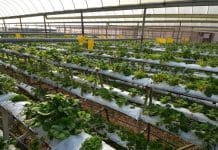Overall, Malaysia’s CPO production registered higher at 1.57m tonnes versus 1.52m tonnes in the previous year owing to the better contribution from most of the states except for Kedah, Selangor, and Sabah. On a year-to-date basis, Malaysia’s FFB yield dropped to 8.18t/hectare from 8.46t/ha impacted by a short labour shortage. MIDF expects production to improve further following the positive development of foreign labour intake, especially from Indonesia which resumed in August.
Palm oil export volume reversed in July, lower by -5.7%yoy. However, it still grew on a month-on-month and year to-date basis to 1.32m tonnes as traders seek more of Indonesia’s PO due to price competitiveness following Indonesia’s move to scrap their export levy until August 31, 2022. Most standard major importing countries were slowed, especially China (-66.7%yoy), EU (-66.1%yoy), and Pakistan (-30.6%yoy). Nevertheless, intake coming from middle east countries such as Iran (+366.8%yoy), Saudi Arabia (+45.6%yoy), and Turkey(+28.9%yoy) were higher as they seek alternate substitutes for sunflower oil.
Closing stocks in July-22 rose +18.5%yoy to 1.77m tonnes vs. 1.50m tonnes due to low export demand and a surge in production during the month. Both stocks, Crude Palm Oil and Palm Kernel Oil advanced +28.4%yoy and +5.9%yoy respectively, driven by the resilient contribution of peninsular (+19.9%yoy), Sabah (+14.5%yoy) as well as Sarawak (+79.9%yoy) areas. MIDF anticipates the stockpiles of Malaysia’s palm oil for 2Q to 3Q to improve following the high production seasons aided by more boots on the ground starting this month.









